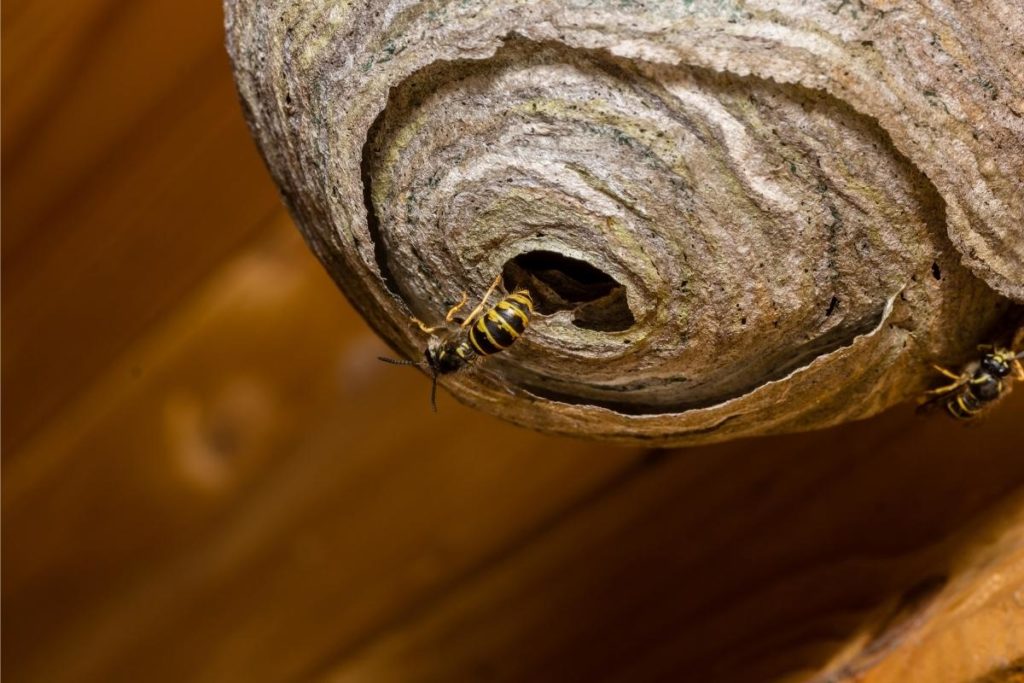What is The Best Way to Get Rid of a Wasp Nest?
You know spring has sprung when fields fill with newborn lambs and flowering daffodils. While the weather’s better during the summer, sadly, the wildlife isn’t always as appealing. Wasps in particular cause such a nuisance that Britain voted them the second most hated creepy-crawly in the country, narrowly losing out to spiders as public enemy number one.

Wasps ruin picnics and barbeques, causing panic, painful stings, and hazards for pets and small children. They buzz, swarm, and build nests where you least expect them. These possibilities raise some serious questions over the summer months: how can you protect yourself, and what’s the best way to get rid of a wasp nest?
How Prevention Helps You Handle Wasps
Just like many pest control strategies, prevention is easier, safer, and kinder than other strategies. It’s the best way to get rid of a wasp nest because it stops one from ever being there in the first place. Preventing wasp nests involves lowering their incentives and decreasing their opportunities. Sugary drinks and snacks attract wasps, along with strong, sweet odours.
Ensuring you seal your foods and drinks, and clean up any spills quickly, lowers the chance of attracting a wasp nest. The same goes for bins and recycling, which should be tightly closed and regularly cleaned and emptied to reduce the risks. Even things like sweet perfumes attract wasps, so consider that before you freshen up at a garden party.
While sweet smells attract wasps, strong herbal scents repel them. Planting herbs like rosemary around the garden, along with your other prevention strategies, helps keep your property pest-free.
Identifying a Wasp Nest
Wasps make their nests from wood pulp, so they often resemble twisted lumps of wood or cardboard. They’re round, flaky, and roughly rugby-ball-shaped, with a papery exterior. The insects build their nest in dark, dry places, like sheds, roofs, and holes in gardens and decking. Keeping your attics, exteriors, and gardens well checked and maintained helps you prevent nesting pests. However, if you already see the signs, it may be too late.
What to Consider Before Removing a Wasp Nest
Being kind to wasps, even if you hate them, does bring a few upsides. Firstly, they’re great pollinators, so they’re important for our ecosystem. They also clean waste, and they help control other crop-killing pests. Depending on your viewpoint, they also claim an inalienable right to existence as a fellow living creature, but that’s by-the-by when they’re stinging your neck or kamikaze diving your pint glass.
It’s also important to consider that wasps only use their nests for the summer, and never return once the hive dies out during the autumn. If you only notice the nest at the end of the season, the best way to get rid of a wasp nest may simply be to wait it out.
Wasps sometimes act aggressively, making them incompatible with an enjoyable summer. If the kids are crying and you’re concerned about leaving the house, it might be time to take evasive action.
Conclusions: The Best Way to Get Rid of a Wasp Nest
Wasps generally sting defensively, so tackling a nest by yourself presents serious hazards. Even if you do manage to damage the nest beyond repair, the insects still take a while to get the message. They’ll still linger around the site, confused and defensive, for long enough to pose a serious threat. If it’s too late for prevention and too pressing to ignore, wasp nest removal experts can help you save your summer.
